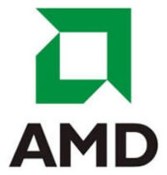
Speaking at the company’s analyst day at its Sunnyvale, Calif. headquarters this morning, AMD chief financial officer Bob Rivet said it’s a tough environment for tech companies. “We’d all like to forget October,” he said.
[aditude-amp id="flyingcarpet" targeting='{"env":"staging","page_type":"article","post_id":100418,"post_type":"story","post_chan":"none","tags":null,"ai":false,"category":"none","all_categories":"business,","session":"D"}']But he added that he would offer an update to the company’s earnings outlook in the first week of December. That means a downward revision is possible, but it’s not going to happen just because Intel’s outlook has fallen off a cliff.
Revenues for the fourth quarter are expected to be flat with the third quarter at $1.58 billion, Rivet said. That compares to Intel’s new revenue forecast, which was revised downward from 3 percent growth to a 12 percent drop in revenues in the fourth quarter. Rivet said consumer confidence is not good. “We are staring at that kind of environment,” he said. “It’s a storm. It will pass.”
AI Weekly
The must-read newsletter for AI and Big Data industry written by Khari Johnson, Kyle Wiggers, and Seth Colaner.
Included with VentureBeat Insider and VentureBeat VIP memberships.
The goal is to come out of the storm in a different position. Thanks to the company’s deal to divide itself into two parts (announced 36 days ago), one with a manufacturing focus and the other doing chip design, AMD is in the process of offloading its debt and reducing its capital spending requirements.
“Clearly, this transaction is a game changer,” Rivet said. “It takes the bankruptcy notion off the table.”
Much of the expected turnaround plan is based on the Shanghai 45-nanometer chips being launched today as well as continued growth in graphics that started earlier this year. Dirk Meyer, chief executive of AMD, said the company has a clear-eyed plan to become a profitable company. “On Shanghai, I can’t wait to hear the cash registers start ringing,” Meyer said. “What excites me as a business guy is making this company cash flow positive as a business. We’ve got the opportunity for the first time ever to turn this company into a cash-generating machine. We’ve collectively had enough of losing money.”
PC unit sales have always grown, even with the slowdown after the tech bubble. The company estimates that PC unit sales will grow 5.3 percent in 2009, which is about as slow a year as 2002. That’s not terrible, given the economic environment, Rivet said. Graphics chip units are expected to grow about 4 percent to 5 percent.
Rick Bergman, general manager of the graphics chip business, said that the company has gained market share in graphics across the board, from low-end to high-end chips, because it came up with a better strategy than competitor Nvidia. In short, AMD focused on the sweet spot of the market, designing a good $200 to $300 chip that could be doubled up in a graphics card to offer a high-end solution. Nvidia, on the other hand, stuck to a traditional strategy of designing a high-performance but power-hungry $400 chip. AMD’s strategy has paid off and its graphics chip division has returned to profitability.
In 2009, the company is targeting 45 percent gross margins and 8 percent net income. Other goals are 10 percent operating margin and 20 percent R&D costs as a percentage of revenues. All of the near-term debt is being moved to its sister organization, The Foundry Company, which will manufacture chips going forward. Capital spending will drop from $1.6 billion in 2007 to $300 million in 2009, thanks to the splitting of the company. The company will be free cash-flow positive.
[aditude-amp id="medium1" targeting='{"env":"staging","page_type":"article","post_id":100418,"post_type":"story","post_chan":"none","tags":null,"ai":false,"category":"none","all_categories":"business,","session":"D"}']
The company plans to hit breakeven results in the first quarter, after a couple of years of losses. AMD promises to deliver its Yukon low-power processor for Netbook computers (meant to surf the web only) in the first half of 2009. Yukon is actually not the company’s answer to Intel’s low-power Atom processor, launched this year. The Yukon platform will be higher power and higher cost than Intel’s Atom. But the release date for its first version of Fusion, a chip design which combines a graphics chip and a microprocessor, has been moved from 2010 to 2011.
Full told, AMD added six new processors to its roadmap for the next couple of years. After AMD announced the split of the company, Intel raised questions as to whether AMD’s cross-license for patents with Intel would still be valid. But Meyer said such talk “raised my blood pressure” and that, based on everything AMD has disclosed publicly about the split, it is clear that there is no legal issue. Specifically, AMD’s agreement with Intel allows AMD subsidiaries to be licensed and that The Foundry Company, which is 43.5 percent owned by AMD, qualifies as a subsidary as defined by the agreement with Intel.
VentureBeat's mission is to be a digital town square for technical decision-makers to gain knowledge about transformative enterprise technology and transact. Learn More
